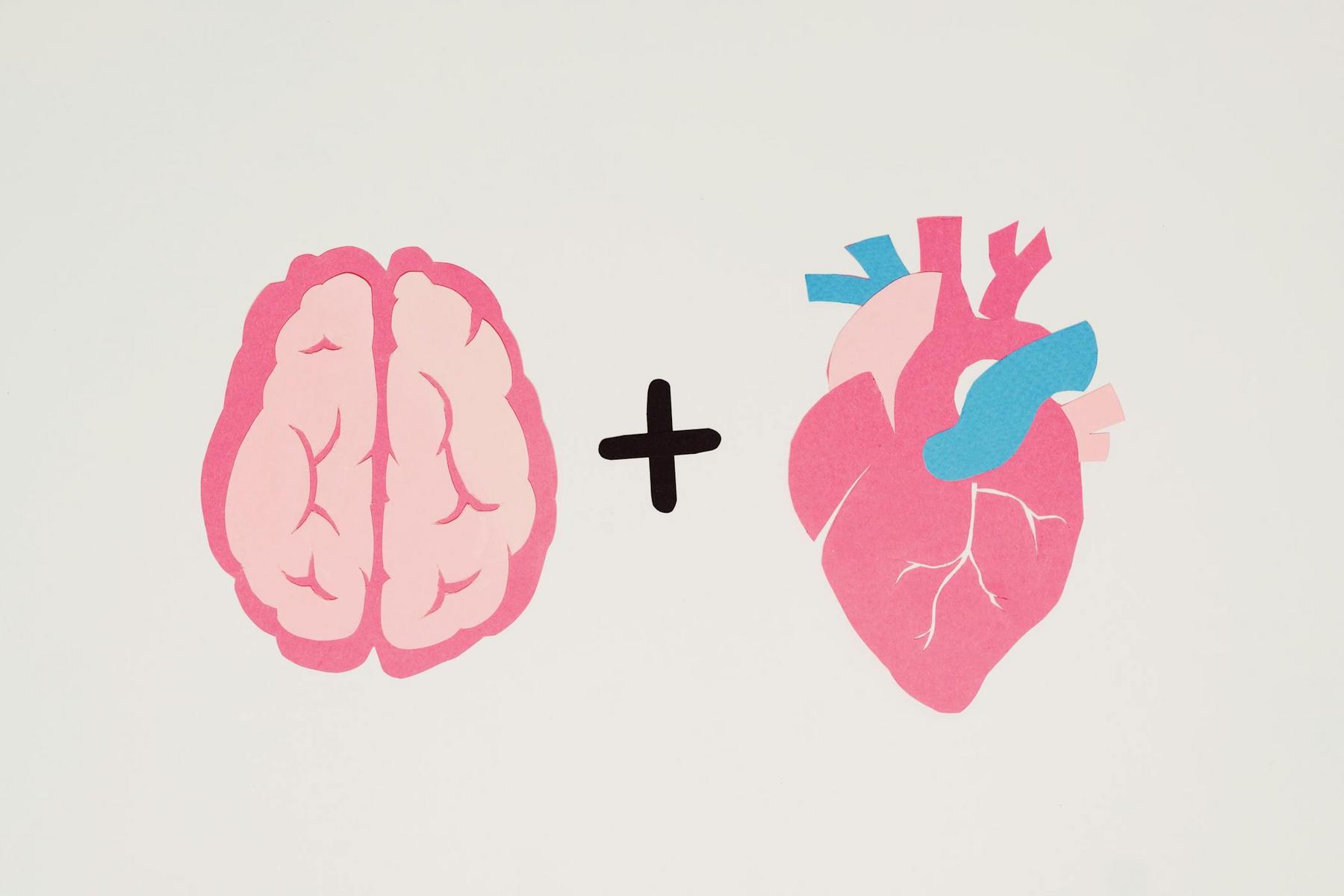In an era where mental health challenges affect millions of Australians, the search for evidence-based, accessible interventions has never been more critical. Whilst traditional approaches to wellbeing often require significant resources or professional guidance, one remarkably simple practice has emerged from decades of rigorous scientific research as a powerful tool for enhancing psychological and physical health: gratitude journaling. This deceptively straightforward intervention—involving the regular written reflection on positive experiences and appreciative thoughts—has been validated through comprehensive studies involving over 26,000 participants, revealing measurable improvements in depression symptoms, anxiety reduction, sleep quality, and overall life satisfaction. The neurobiological mechanisms underlying these profound benefits involve complex interactions between reward processing centres, emotional regulation networks, and stress response systems, with functional neuroimaging studies demonstrating that structured gratitude practices can literally reshape brain architecture through enhanced neuroplasticity.
What Happens in Your Brain When You Practice Gratitude Journaling?
The neurobiological foundations of gratitude journaling reveal a sophisticated orchestration of brain activity that extends far beyond simple positive thinking. When individuals engage in structured gratitude practices, functional magnetic resonance imaging studies demonstrate synchronised activation across multiple brain regions, including the medial prefrontal cortex, anterior cingulate cortex, and hypothalamus. The medial prefrontal cortex, essential for moral cognition and value judgements, plays a particularly crucial role in processing gratitude experiences by helping individuals reflect on and appreciate positive aspects of their lives.
The anterior cingulate cortex contributes to gratitude’s therapeutic effects through its involvement in emotional regulation and empathy processing. When individuals write about grateful experiences, this region shows increased activity that corresponds with improved stress management and deeper social connections with others. Perhaps most significantly, the hypothalamus—which serves as the brain’s primary stress regulation centre—demonstrates reduced activity during gratitude interventions, leading to measurably lower cortisol levels and improved physiological markers of relaxation.
The neurochemical aspects of gratitude practices involve the strategic release of key neurotransmitters that promote wellbeing and motivation. When individuals engage in gratitude journaling, their brains release dopamine and serotonin, two chemicals fundamentally associated with happiness, pleasure, and emotional stability. Dopamine activation occurs particularly in the brain’s reward pathways, creating positive reinforcement loops that make individuals more likely to continue engaging in gratitude practices over time. This neurochemical reward system helps explain why gratitude journaling can become an intrinsically motivated behaviour rather than requiring external encouragement to maintain.
How Effective Are Gratitude Journals According to Clinical Research?
Systematic reviews and meta-analyses provide the strongest evidence for gratitude journaling’s therapeutic effectiveness across diverse populations and health conditions. A comprehensive meta-analysis of 70 studies involving more than 26,000 participants found significant associations between gratitude practices and reduced depression symptoms, with effect sizes that remain clinically meaningful even when controlling for publication bias and study quality. The analysis revealed that gratitude interventions consistently produced improvements in life satisfaction, social relationship quality, and self-esteem measures, suggesting that the benefits extend beyond simple mood enhancement to encompass broader aspects of psychological functioning.
Depression-related outcomes show particularly robust improvement following gratitude journaling interventions. Three studies utilising validated assessment tools found that participants engaging in structured gratitude practices demonstrated 6.89% lower depression scores compared to control groups. These improvements occurred across relatively brief intervention periods, typically ranging from two to twelve weeks, indicating that gratitude journaling can produce rapid therapeutic benefits.
| Health Outcome | Research Finding | Study Duration | Effect Size |
|---|---|---|---|
| Depression Symptoms | 6.89% reduction compared to controls | 2-12 weeks | Clinically significant |
| Anxiety Levels | Significant reduction in worry scores | 3-8 weeks | Moderate to large |
| Sleep Quality | Improved sleep patterns and duration | 2-6 weeks | Moderate |
| Life Satisfaction | Enhanced overall wellbeing scores | 4-12 weeks | Large |
| Physical Health | Improved cardiovascular markers | 8-12 weeks | Moderate |
Anxiety reduction represents another well-documented outcome of gratitude journaling practices. Multiple studies demonstrate that individuals who regularly engage in written gratitude exercises experience significant decreases in worry, psychological distress, and anxiety-related symptoms. Research utilising standardised worry questionnaires showed that gratitude intervention participants had significantly lower worry scores compared to control groups, with benefits persisting beyond the active intervention period.
Physical health outcomes associated with gratitude journaling extend beyond psychological benefits to encompass measurable improvements in cardiovascular, immune, and sleep-related parameters. Studies of heart failure patients found that gratitude journaling led to increased parasympathetic heart rate variability, a marker associated with improved cardiac function and survival rates. Cancer patients participating in gratitude journaling interventions reported improved sleep quality, reduced pain perception, and decreased anxiety levels throughout their treatment courses.
Which Gratitude Journaling Methods Are Most Effective?
The “Three Good Things” method, pioneered by positive psychology researcher Dr Martin Seligman, represents the most extensively studied and clinically validated approach to gratitude journaling. This technique involves three distinct components: identifying something positive that occurred during the day, writing down the specific details of what made the experience meaningful, and reflecting on one’s personal role in creating or appreciating that positive moment. Research demonstrates that this structured approach produces superior outcomes compared to general gratitude practices, with benefits persisting for six months or longer after the initial intervention period.
The critical third component of the Three Good Things method, focusing on personal agency in positive experiences, appears particularly important for therapeutic effectiveness. By encouraging individuals to recognise their own contributions to positive outcomes, this approach builds self-efficacy and internal locus of control alongside gratitude cultivation. Participants report that this self-reflection component helps them develop greater awareness of their personal strengths, values, and capacity to influence their life experiences positively.
Gratitude letter writing represents another well-researched methodological approach that produces distinct therapeutic benefits. In this technique, individuals write detailed letters expressing gratitude to specific people who have positively impacted their lives, whether or not these letters are actually delivered. Studies involving gratitude letter writing show particularly strong effects on social connection, empathy, and perspective-taking abilities. University counselling centre research found that participants who wrote gratitude letters weekly for three weeks showed significantly better mental health outcomes at 12-week follow-up compared to control groups.
The temporal aspects of gratitude journaling practice significantly influence therapeutic outcomes, with research identifying optimal frequency and duration parameters for maximum benefit. Daily practice appears superior to weekly or less frequent approaches, with studies showing that individuals who engage in gratitude journaling every day for three weeks experience greater and more sustained improvements compared to those practising less regularly. Duration recommendations from research literature suggest that initial gratitude journaling interventions should continue for at least 21 days to establish neuroplastic changes that support sustained behaviour change.
How Should You Implement Gratitude Journaling for Maximum Benefit?
Effective implementation of gratitude journaling requires careful attention to environmental, temporal, and structural factors that optimise engagement and therapeutic outcomes. Research indicates that establishing a consistent time and location for gratitude practice significantly enhances adherence and effectiveness. Many successful practitioners integrate gratitude journaling into existing daily routines, such as morning reflection periods or pre-bedtime rituals, which creates natural cues and reduces the cognitive burden of remembering to practice. The physical act of writing by hand, rather than typing, appears to enhance the therapeutic benefits through increased mindful attention and deeper processing of grateful experiences.
Prompt-based approaches can significantly enhance gratitude journaling effectiveness, particularly for individuals who initially struggle with identifying grateful experiences. Research-validated prompts include questions such as “What is something small that happened today that made a positive difference in your mood?” and “Think of a person who has made a positive impact in your life and describe how their actions affected you”. These structured prompts help individuals develop greater sensitivity to positive experiences and expand their capacity to recognise gratitude opportunities in daily life.
Digital implementation strategies have gained prominence with the widespread adoption of smartphone and online platforms for health interventions. Research indicates that online gratitude journaling can be equally effective as traditional paper-based approaches, with some advantages including automatic reminders, progress tracking, and accessibility across multiple devices. However, the choice between digital and analogue formats should be individualised based on personal preferences, technological comfort, and lifestyle factors.
Customisation strategies that align gratitude journaling with individual values, interests, and cultural backgrounds enhance engagement and therapeutic outcomes. Research suggests that gratitude practices should be adapted to reflect personal meaning systems, spiritual beliefs, and cultural contexts. For individuals with strong connections to nature, gratitude journaling might emphasise environmental appreciation and outdoor experiences. Those with religious or spiritual orientations may benefit from incorporating prayer, meditation, or sacred text reflection into their gratitude practices.
What Are the Long-term Effects of Regular Gratitude Journaling?
Longitudinal research reveals that gratitude journaling produces lasting structural and functional changes in brain networks responsible for emotional regulation, reward processing, and social cognition. A landmark neuroimaging study found that participants who maintained daily gratitude journaling for three months showed measurable increases in grey matter density within the prefrontal cortex. These structural brain changes correspond with sustained improvements in emotional regulation capabilities, decision-making processes, and capacity for sustained positive emotional states.
Functional connectivity studies using advanced neuroimaging techniques demonstrate that gratitude journaling strengthens communication pathways between brain regions involved in positive emotion processing and those responsible for executive control. These enhanced neural networks enable individuals to more effectively regulate negative emotions, maintain perspective during stressful situations, and access positive emotional resources when facing challenges. The strengthened neural connectivity appears to create a more resilient brain architecture that supports sustained psychological wellbeing even during difficult life circumstances.
The concept of “positive recall bias” represents one of the most significant long-term cognitive changes associated with regular gratitude journaling practice. Research indicates that individuals who maintain gratitude practices for extended periods develop enhanced ability to notice, remember, and recall positive experiences whilst simultaneously reducing the salience of negative events. This cognitive shift occurs through repeated strengthening of neural pathways associated with positive attention and memory consolidation.
Longitudinal studies tracking gratitude journaling practitioners over months and years reveal that the benefits compound over time rather than diminishing through habituation. Participants who maintain regular gratitude practices report continued improvements in life satisfaction, relationship quality, and physical health markers even after years of consistent practice. This pattern differs from many other positive psychology interventions that show peak benefits during initial implementation followed by gradual decline.
How Does Gratitude Journaling Integrate with Holistic Health Approaches?
The integration of gratitude journaling within comprehensive healthcare frameworks represents a growing area of clinical interest and research application. Holistic healthcare practitioners increasingly recognise gratitude practices as valuable adjunctive interventions that complement traditional approaches whilst addressing psychological, social, and spiritual dimensions of health and wellness. This integrative approach acknowledges that sustainable health improvements often require attention to emotional and mental wellbeing alongside physical symptom management.
Mind-body practitioners have documented significant synergistic effects when gratitude journaling is combined with other evidence-based wellness practices such as meditation, yoga, and mindfulness training. Research indicates that individuals who engage in multiple complementary practices experience greater overall benefits than those pursuing single interventions alone. Gratitude journaling appears to enhance the effectiveness of meditation practices by providing specific positive content for contemplation, whilst meditative approaches deepen the emotional impact of gratitude reflection.
Integrative healthcare clinics increasingly incorporate gratitude journaling into treatment protocols for chronic pain, autoimmune conditions, and stress-related disorders. Healthcare providers report that patients who engage in regular gratitude practices often demonstrate improved treatment adherence, better patient-provider relationships, and enhanced overall treatment outcomes. The practice appears particularly valuable for patients managing chronic conditions where psychological factors significantly influence symptom severity and quality of life.
The cultural and spiritual dimensions of gratitude practices align well with integrative healthcare approaches that honour diverse healing traditions and belief systems. Many indigenous and traditional healing systems have long recognised gratitude as fundamental to health and wellbeing, making gratitude journaling a bridge between contemporary evidence-based approaches and ancestral wisdom traditions. Healthcare providers working with culturally diverse populations find that gratitude practices can be adapted to incorporate specific cultural values, spiritual beliefs, and traditional healing concepts whilst maintaining their therapeutic effectiveness.
Establishing Gratitude Practice as a Foundation for Optimal Wellbeing
The accumulated research evidence demonstrates that gratitude journaling represents a powerful, scientifically validated intervention capable of producing measurable improvements across multiple domains of human wellbeing. Meta-analytic studies encompassing tens of thousands of participants provide compelling evidence for gratitude journaling’s effectiveness in reducing depression and anxiety symptoms whilst enhancing life satisfaction, social relationships, and physical health outcomes. The neurobiological mechanisms underlying these benefits involve complex interactions between brain reward systems, emotional regulation networks, and stress response pathways, with functional neuroimaging studies revealing that regular gratitude practice can literally reshape brain structure through enhanced neuroplasticity.
The methodological sophistication of gratitude journaling research has evolved significantly, with studies now employing rigorous experimental designs, active control conditions, and long-term follow-up assessments that strengthen confidence in the therapeutic benefits. The Three Good Things approach pioneered by Dr Martin Seligman has emerged as the gold standard for gratitude journaling interventions, with its structured format producing superior and more sustained outcomes compared to less systematic approaches. The critical importance of personal agency reflection in this method highlights how gratitude practices work not merely through positive emotion induction but through enhanced self-efficacy and internal locus of control development.
Implementation strategies that optimise therapeutic outcomes emphasise consistency, personalisation, and integration with existing daily routines. The flexibility of gratitude journaling allows for adaptation across diverse populations, settings, and cultural contexts whilst maintaining therapeutic effectiveness. Digital platforms and traditional handwritten approaches both demonstrate validity, suggesting that the specific format matters less than consistent engagement and meaningful reflection on grateful experiences.
Long-term neuroplasticity research reveals that gratitude journaling creates lasting changes in brain structure and function that persist well beyond active intervention periods. These findings suggest that gratitude practices represent not merely temporary mood interventions but fundamental tools for reshaping neural architecture in ways that support sustained psychological resilience and wellbeing. The documented strengthening of positive recall bias through regular gratitude practice provides a cognitive mechanism explaining how individuals develop enhanced capacity to navigate life challenges whilst maintaining optimistic perspectives.
The integration of gratitude journaling within holistic healthcare frameworks represents a promising frontier for addressing the complex, multifaceted nature of health and wellness. As healthcare systems increasingly recognise the importance of psychological and social factors in physical health outcomes, evidence-based practices like gratitude journaling offer accessible, cost-effective interventions that complement traditional approaches. The cultural adaptability and spiritual dimensions of gratitude practices make them particularly valuable for diverse populations seeking healthcare approaches that honour their values and belief systems.
How long does it take to see benefits from gratitude journaling?
Research indicates that measurable improvements in mood and wellbeing can occur within as little as two weeks of consistent daily practice. However, the most significant and lasting benefits typically emerge after three to six weeks of regular gratitude journaling. Brain imaging studies show that structural changes in neural networks become evident after three months of sustained practice, corresponding with the most robust and enduring therapeutic outcomes.
Is handwritten gratitude journaling more effective than digital formats?
Both handwritten and digital gratitude journaling demonstrate therapeutic effectiveness in research studies. Handwritten journaling may provide additional benefits through increased mindful attention and deeper cognitive processing of grateful experiences. However, digital formats offer advantages including accessibility, automatic reminders, and progress tracking capabilities. The choice between formats should be based on individual preferences and lifestyle factors rather than therapeutic superiority.
Can gratitude journaling help with chronic health conditions?
Multiple studies demonstrate that gratitude journaling can provide significant benefits for individuals managing chronic health conditions. Research with cancer patients, heart failure patients, and those with autoimmune disorders shows improvements in sleep quality, pain management, treatment adherence, and overall quality of life. The practice appears particularly valuable for addressing the psychological and emotional aspects of chronic illness that significantly influence physical symptoms and treatment outcomes.
What’s the optimal frequency for gratitude journaling practice?
Research indicates that daily practice produces superior outcomes compared to weekly or less frequent approaches. Studies show that individuals who engage in gratitude journaling every day for at least three weeks experience greater and more sustained improvements in mental health measures. However, after establishing initial habits and neuroplastic changes, many practitioners find that regular but less frequent maintenance sessions (three to four times per week) effectively sustain the benefits.
How does gratitude journaling compare to other positive psychology interventions?
Gratitude journaling consistently ranks among the most effective positive psychology interventions in comparative research studies. It demonstrates particular advantages in terms of accessibility, cost-effectiveness, and sustained long-term benefits. Unlike some interventions that show diminishing returns over time, gratitude journaling appears to produce compounding benefits with continued practice. The intervention’s flexibility and adaptability across diverse populations and settings make it uniquely valuable within comprehensive wellness approaches.













